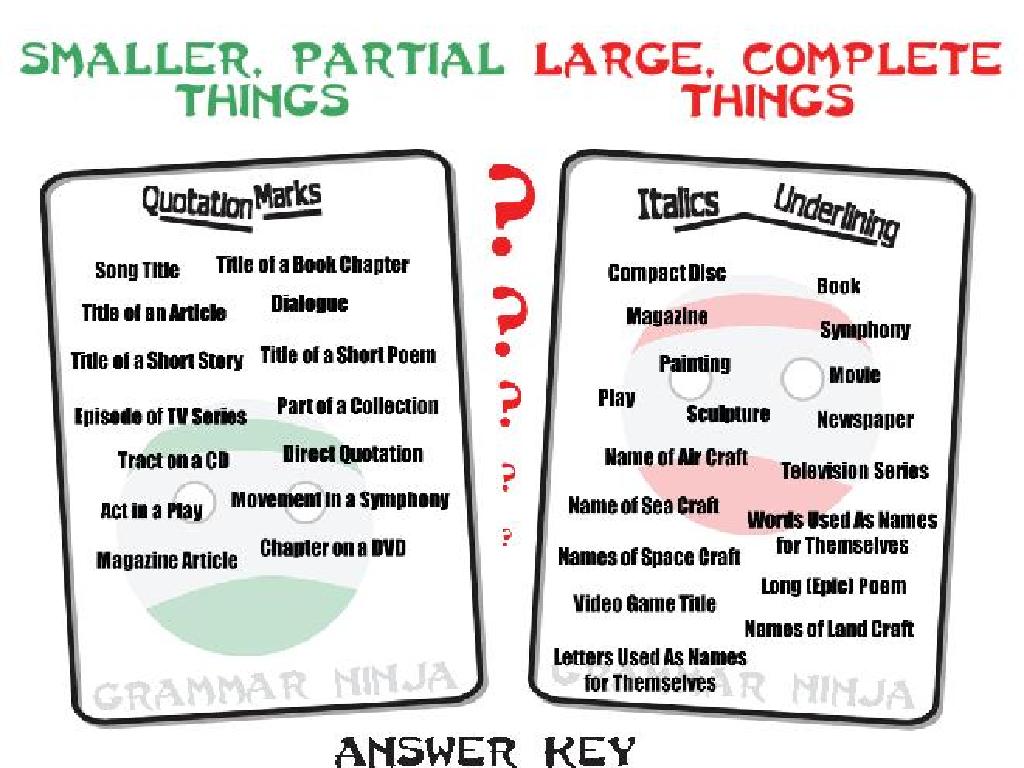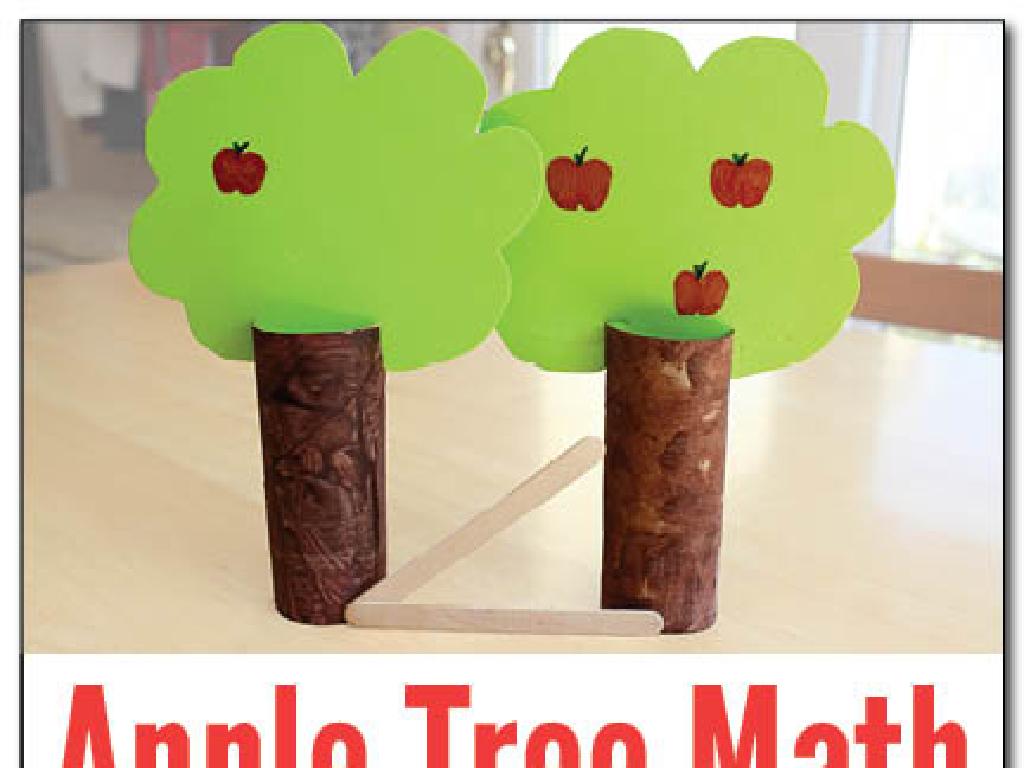Multiply By 10 Or 100
Subject: Math
Grade: Fourth grade
Topic: Multiply By Two-Digit Numbers
Please LOG IN to download the presentation. Access is available to registered users only.
View More Content
Multiplying by 10 or 100
– Review basic multiplication
– Recall times tables up to 10
– Multiplication as repeated addition
– Understand 4 x 3 as 4 added 3 times
– Introducing multiplication by 10 or 100
– Learn to multiply numbers by 10 and 100
– Practice with examples
– Try 7 x 10 and 5 x 100 together
|
Begin the lesson by reviewing the multiplication facts that students have learned previously, ensuring a solid foundation for more complex multiplication. Explain multiplication conceptually as repeated addition, which will help students understand the process of multiplying by larger numbers like 10 or 100. Introduce the day’s topic by explaining the pattern and shortcut when multiplying by 10 or 100, such as adding a zero to the end of the number for every ten. Provide clear examples and encourage students to participate by solving a few problems as a class. This will prepare them for more practice and mastery in subsequent activities.
The Power of Multiplication: By 10 and 100
– Why learn to multiply by 10 or 100?
– Multiplication in daily life
– Helps in quick and easy calculations
– Examples: Money calculations
– Understanding price of multiple items (e.g., 10 candies for $1 each)
– Examples: Measuring distance
– Calculating long distances (e.g., 100 miles in a road trip)
|
This slide aims to show students the practical importance of being able to multiply by 10 or 100. Emphasize that these skills are not just for classroom exercises but are used in everyday situations, such as calculating money when buying several items of the same price or understanding distances while traveling. Provide clear examples, such as if one candy costs $1, then 10 candies cost $10 (1 x 10 = 10), or if one mile is 1000 meters, then 100 miles are 100,000 meters (1000 x 100 = 100,000). Encourage students to think of other examples where they might use multiplication by 10 or 100 in their lives.
Multiplying by 10
– Recognize the pattern with 10
– When you multiply by 10, add a zero to the number.
– Example: Multiplying 7 by 10
– 7 x 10 equals 70. See how a zero is added to 7?
– Try it out: 5 times 10
– What’s 5 x 10? Use the pattern to find out.
|
This slide is aimed at helping fourth graders understand the concept of multiplying by 10. Start by explaining the pattern that occurs when any number is multiplied by 10 – a zero is added to the end of the original number. Use the hands-on example of 7 x 10 to illustrate this, showing that 70 is the result. Then, present a practice problem, 5 x 10, and encourage students to apply the pattern they’ve learned to solve it. Make sure to walk around the classroom to assist any students who might be struggling with the concept and provide additional examples if necessary. The goal is for students to become comfortable with this pattern and to understand the basic concept of multiplication by 10.
Multiplying by 100
– Recognize the pattern with 100
– When you multiply by 100, add two zeros to the number.
– Example: 3 x 100 = 300
– Multiplying 3 by 100 gives us 300. It’s like adding two zeros to 3!
– Try it: 4 x 100 = ?
– What do you get if you multiply 4 by 100? Add two zeros to 4.
– Practice makes perfect!
|
This slide is aimed at helping fourth-grade students understand the concept of multiplying by 100. Start by explaining the pattern that occurs when any number is multiplied by 100 essentially, two zeros are added to the original number. Use the hands-on example of 3 x 100 to illustrate this point. Then, present a practice problem such as 4 x 100 and encourage students to solve it. Emphasize that the pattern is consistent, regardless of the number being multiplied. To reinforce the concept, provide additional practice problems and encourage students to explain the pattern in their own words. This will help solidify their understanding and prepare them for more complex multiplication tasks.
Patterns in Place Value: Multiplying by 10 or 100
– Understanding place value shifts
– When multiplying by 10 or 100, each digit shifts left in the place value chart.
– Interactive place value blocks
– Use virtual blocks to show how numbers change when multiplied by 10 or 100.
– Group activity on patterns
– Work in groups to find patterns when multiplying different numbers by 10 or 100.
– Recognizing multiplication patterns
|
This slide introduces the concept of how place value is affected when multiplying by 10 or 100. Begin by explaining that multiplying by 10 shifts the digits one place to the left, making the number ten times larger, and multiplying by 100 shifts two places to the left. Use interactive place value blocks to visually demonstrate this concept, which can help students grasp the idea more concretely. For the group activity, have students work together to multiply various numbers by 10 and 100 and identify the emerging patterns. This activity encourages collaboration and reinforces the concept through repetition. The goal is for students to recognize that the place value of digits increases as we multiply by powers of 10, and this understanding is crucial for their future math skills development.
Let’s Practice Together: Multiplication by 10 & 100
– Class solves problems on the board
– Pair up to solve multiplication problems
– Work with a classmate to multiply numbers by 10 or 100
– Discuss solutions with the class
– Share different solving methods and answers
– Understand patterns when multiplying by 10 & 100
– Notice how the digits shift place when we multiply by 10 or 100
|
This slide is designed to facilitate an interactive class activity focused on multiplying by 10 and 100. Begin by solving a few problems as a class on the board to demonstrate the process. Then, have students pair up to tackle similar problems, encouraging collaboration and peer learning. Afterward, regroup and discuss the solutions as a class to ensure understanding and address any misconceptions. Highlight the pattern that occurs when multiplying by 10 and 100, such as the shift in place value. For example, multiplying by 10 adds a zero to the end of the number, and multiplying by 100 adds two zeros. Provide at least four different problems for the students to solve, ensuring a variety of difficulties and scenarios to cater to different learning paces.
Common Mistakes in Multiplication by 10 and 100
– Avoid place value errors
– Remember to shift the digits one place to the left for x10, two for x100.
– Differentiate between 10 and 100
– Multiplying by 10 adds one zero, 100 adds two zeros to the number.
– Learn tips for correct multiplication
– Use place value charts and zero ‘placeholders’ to help.
– Practice with examples
– Try 32 x 10 and 32 x 100 to see the difference in shifting.
|
When teaching multiplication by 10 or 100, emphasize the importance of place value and the role it plays in correctly solving the problems. Students often forget to shift the digits or mix up the number of places they need to shift. To help them remember, use visual aids like place value charts and demonstrate the ‘placeholder’ concept by adding zeros. Encourage students to verbalize their process as they multiply, which can reinforce the concept. Provide plenty of practice problems, and correct misconceptions immediately to prevent the formation of bad habits.
Class Activity: Multiplication Relay
– Divide class into teams
– Solve multiplications by 10 or 100
– Example: 7 x 10, 23 x 100
– First team to finish wins a point
– Encourage teamwork and accuracy
– Check each other’s work for mistakes
|
This activity is designed to make learning multiplication by 10 or 100 fun and interactive. Start by dividing the class into small teams, ensuring a mix of abilities in each group. Provide each team with a set of multiplication problems that involve multiplying by 10 or 100. The first team to correctly complete all their problems wins a point for their team. Emphasize the importance of working together and double-checking work for accuracy. Possible variations of the activity could include a timed challenge, relaying one problem at a time to the next team member, or having teams create their own problems for others to solve. This will help reinforce their understanding of place value and the concept of multiplying by multiples of 10.
Homework and Lesson Summary
– Practice multiplying by 10 and 100
– Review today’s key multiplication concepts
– Remember: add one zero when multiplying by 10, two zeros for 100
– Clarify any doubts or questions
– Homework reinforces learning
– Complete the worksheet for tomorrow’s review
|
As we wrap up today’s lesson on multiplying by 10 and 100, assign a worksheet that provides additional practice to reinforce the concepts learned. Summarize the key points, emphasizing the pattern of adding zeros to the original number when multiplying by 10 or 100. Encourage students to ask any lingering questions they might have to ensure clarity and understanding. The homework will serve as a crucial tool to solidify their grasp of the material, preparing them for more complex multiplication tasks. For the next class, plan a brief review of the homework to address common errors and celebrate successes.





